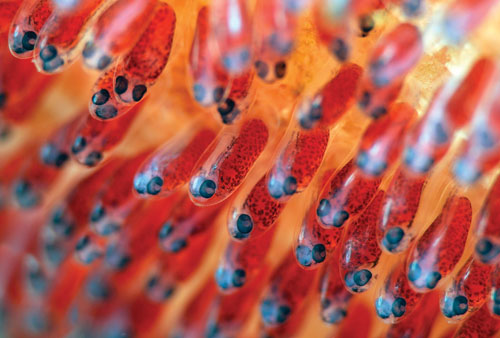Depth of Field for Image Effect
By Michel Gilbert & Danielle Alary

New photographers often struggle with some concepts, and depth of field is one of them. Learn how to use it creatively. We may be taking digital images today but the laws of physics and optics still apply. One of them relates to depth of field. Mastering this concept helps you produce more powerful images.
Physics
Wikipedia defines depth of field as follows: “The distance between the nearest and farthest objects in a scene that appear acceptably sharp in an image.”
Several factors influence the depth of field. These include:
- Sensor size. For a given aperture and the same focal length, a smaller sensor (APS-C format for example) will lend more depth of field than a large one (like the full-frame 23mm X 36mm found on higher end cameras).
- Distance. Absolute depth of field is larger at longer distances.
- Lens aperture. Small apertures (f/16 for example) produce more depth of field than larger ones (f/2.8 for example).
Everything being equal, for any reproduction ratio (the relative size of the subject on a sensor), the depth of field is the same even with different focal lengths. This seems to contradict the idea that wide-angle lenses “have more depth of field” than normal or telephoto lenses. In appearance they do, simply because the reproduction ratio at a given distance is different between those types of lenses.
Instead of delving in mathematical formulas or other theories related to our subject, let’s have a look at some practical examples.
The information above will help you make choices that will influence the look of your images.

Depth of field in action
Use depth of field to isolate a subject
- By selecting a small lens aperture, you can isolate your subject from the background and foreground.
At f 2.8 on a normal lens such as a 30mm – 50mm, only a portion of your image will be in focus, especially if the foreground and background are located at some distance from your main focusing point. Remember also that the limited depth of field experienced in macrophotography also comes in handy in this respect.
Use a shorter focal length to lend more depth of field
- Instead of making a picture with a 100mm lens, use a 50mm and shoot from the same distance. Of course, it may be harder to fill the frame with the subject, but the larger depth of field could make the difference between having the whole subject in focus rather than only a portion of it.
- The opposite is also true, you may want to emphasize just a small portion of a subject; select a longer focal and use a middle range aperture that will produce less depth of field.
Select a smaller aperture to maximize depth of field
- Rather than shooting an image at f/8, use f/11, f/16 or even f/22. This produces more depth of field and may be useful to bring more of a subject into proper focus, or to alleviate some focusing error.
- However, this suggestion comes with a caveat. On most sensors, at apertures smaller than f/16, a phenomenon called ‘diffraction’ occurs, which decreases image sharpness. Caused by the fact that different wavelengths focus at different distances, diffraction reduces image quality. However, this degradation may be of little importance if your image is meant for an iPhone or a tablet and therefore involves less magnification. In practice, diffraction matters more to the purists than the casual shooter. Further, if you have a choice between having an image with some diffraction or no image at all, the decision is easy to make.
Use a smaller sensor to maximize depth of field
- We are in the middle of a full-frame (FF) format craze. For camera manufacturers, this is a high-yield market. However, smaller sensors like the APS-Cs found in DSLRs and some EVIL cameras or the thumb-size sensors of the compact digicams inherently produce more depth of field than their FF counterparts. This in itself is a good reason to keep a cropped sensor in your stable even if you’ve forked over top $$ to buy a FF camera.
Another tool
Depth of field is integral to any image. Understanding it and using it to advantage allows you to create pictures that convey a message with more immediacy and impact.
You don’t even need to go underwater to practice and learn about this concept. Play with your camera, try different lenses, different apertures, work at varying distances. Soon you will be integrating depth of field in your technique without even knowing it.
Happy Bubbles!







